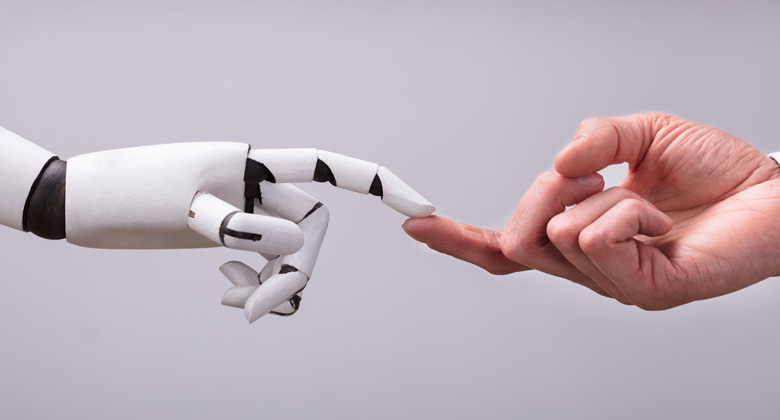Sustainable fashion has been bubbling away.
Just before ‘sustainability’ became just another buzzword, we had ‘eco-friendly’ and ‘green economy’. Today, there just seems to be an abundant usage of words like those. Some brands use them frivolously for the sake of not being left out of the trend.
But there is nothing dubious about putting sustainability in how fashion businesses operate per se. For any kind of business, being sustainable is to be more cost-efficient, and hence profitable. If you want to stay in the business for a longer time, then it is only logical. In the fashion industry, going sustainable mostly encompasses reducing pollution in the process of textile manufacturing, as well as giving back to the community. And technology has had tremendous impact in moving sustainable fashion forward.
Fashion industry’s transparency under attack
Thanks to social media, consumers can directly engage with, influence and scrutinise company’s’ sustainability policy. Following a series of accusations and tragedies like Rana Plaza in the past few years, transparency in fashion supply chain has been in an increasing demand.
Having said that, fashion brands often face the most significant problem: ‘consumer expectations for inexpensive clothing.’
But some smart fashion brands are trying to prove the compatibility of sustainability, innovation and sophistication, by adopting it to their businesses and branding strategies.
Adidas’ 3D printed sneakers
Just like any other large well-established brands, Adidas seeks to showcase its commitment to sustainability. And it has done so through innovation, technology and collaboration with charities like Parley, ‘a US-based non-governmental organisation that aims to raise awareness of the planet’s critically endangered ocean ecosystems’.
The team developed sneakers with a 3D-printed midsole, made entirely from the yarns, used plastic, fishing nets and other ocean waste.
“The shoes are manufactured using the very latest in automated textile technology and more will follow in the coming months around the new technology side of the project.” (Read more here.)
Whether their main motif was to satisfy the stakeholders or simply protect their reputation, these slick sneakers can potentially address the fact that around 8 million metric tons of plastic end up in the world’s oceans annually, causing deadly harms to marine life.
While this appears as an one-off project for Adidas, some young fashion brands of the future are putting ethics at the core of their brand.
Young brands combine ethics and creative all together.
Auria is not shy when it comes to educating consumers about their responsibilities. Cyrill Gutsch, founder of Parley for the Oceans, once said that it’s ‘in the hands of creative communities’ to set a new standard and make changes. And Auria seems to be the perfect example striking the subtle balance between sexy, fun and sustainable.
Their swimwears are not just creative, but also smart in a way they were the first ones to use ‘a new generation fabric’, ie., recycled fishing nets.
“The brand shows you can do sustainability, you can do modern design and you can do a positive feminist aesthetic in this one product.” – Margot Bowman via Vice.
Other brands like Katie Jones specialising in hand-knitted knitwears also take a similar approach, often utilising upcycled leather and denim to create something brand new. Just like Auria, her brand focuses on quality over quantity (find out more here).
Socially-conscious in disguise?
It is extremely difficult to incorporate and deliver sustainability in fashion. Not every brand is successful in this attempt. There’s a great associated cost for those whose sustainable approaches are actually causing harm.
Take TOM Shoes’ buy-one-give-one promise for example. It appeals to the millennials’ desire to join the cool kids as well as to contribute to a good cause. But the brand has been blamed for their ‘mistake’ – ‘While TOMS gives shoes in over 50 countries, their products are made only in Argentina, Ethiopia and China. That means in most the communities they give, their “shoe drops” constitute an economic bomb to any local industry that may have existed prior to the introduction of free international shoes.’ (read more here).
That is a real bummer for both TOMS and their fans, isn’t it. Along with others whose sustainability appeal is blatantly a marketing ploy, the consequences are often consumer backlashes, taken on street, social media and elsewhere. (Once being accused, it’s normally a tough journey to refute their hypocritical business model.)
So is fashion compatible with sustainability at all?
Take Adidas and TOMS’ case studies, and you’ll find that: fashion can be at the both ends. Just as much as it is dependent on manufacturing, it also has ‘soft power’ in the form of upcycling and so on.
But it has just started. Technology could potentially further improve fashion’s sustainability issue. And brands will be smarter in raising, developing and managing related projects.
The founder of Parley has also left some positive view: ‘The fashion industry is in a unique position to address the problem of ocean pollution. “Fashion is at the crossroads of consumerism and innovation; it is able to communicate messages others can’t address. It’s a strong vehicle of change.”
What do you think?
Appnova is a digital agency specialising in web design, UX, eCommerce, mobile app development, branding, content marketing and social media.
Keep following us on Twitter @appnova and “like” us on Facebook for useful news and tasteful digressions about geeky stuff.








0.Comments